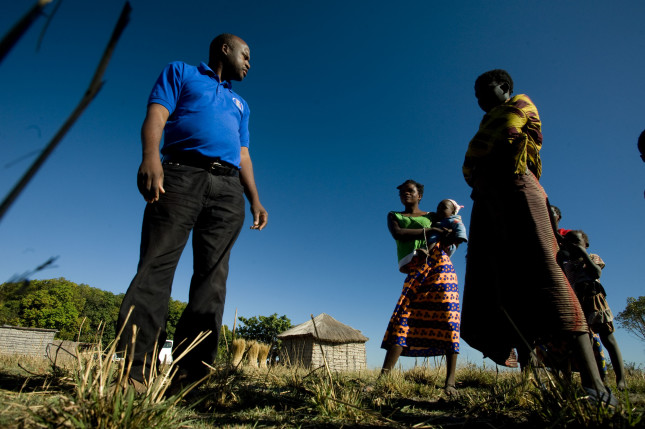As documented by the New Security Beat, environmental peacebuilding has grown dramatically as a field in recent years. Across the security, development, and diplomatic communities, there is increased recognition that disputes related to natural resources and the environment can escalate to violence, fund armed conflict, and provide an incentive for peace spoilers. At the same time, practitioners and researchers have highlighted numerous ways that natural resources and the environment can be a catalyst of peace by supporting livelihoods and economic recovery, underpinning basic services, and providing a context for dialogue and cooperation.
As a longtime proponent of environmental peacebuilding, I am proud of the increased professionalization of the field and the growing recognition it enjoys across sectors. But to fully realize the potential of environmental peacebuilding in practice, it’s time we overcome two related challenges.
First, we need to do a better job of showing the impact of environmental peacebuilding initiatives. Monitoring and evaluation (M&E) of environmental peacebuilding is complicated by the long time horizon for ascertaining impacts (often, extending years after a project ends), the multiplicity of actors (complicating the process of attributing impact to particular interventions), the dynamic and often insecure context (which can make M&E activities unsafe), the lack of treatment and control cases (and thus, the reliance on counterfactuals), and the different objectives and metrics used for environmental and peacebuilding interventions. Many of these challenges are common with impact evaluation more broadly, but are particularly challenging in conflict-affected settings.
In this era of results-based management, the difficulties in showing environmental peacebuilding’s impact has hampered the mobilization of funding for environmental peacebuilding from governmental, intergovernmental, and foundation sources; it has also constrained efforts to identify and share the most effective approaches. One promising development is an ongoing shift by some evaluators from emphasizing attribution (where an impact is traced to a particular intervention) to focusing on contribution (where an intervention may be said to contribute to the achievement of a particular objective).
Second, we need to build the evidence base for environmental peacebuilding. There is a rapidly growing body of academic and practitioner literature on the various environmental causes and dynamics of conflict. However, knowledge about effective solutions has lagged, with the literature focusing on anecdotal experiences and deductive solutions. We often lack good evidence about which approaches work, under what circumstances, and why.
These challenges are related. Monitoring tracks the effectiveness of ongoing interventions, and evaluation informs—or should inform—future programming. As such, monitoring and evaluation help to build the evidence base. At the same time, building the evidence base about environmental peacebuilding solutions helps to guide the theory of practice and evaluation metrics. For these reasons, a growing number of institutions are integrating learning into monitoring and evaluation.
Three key steps could advance monitoring, evaluation, and learning for environmental peacebuilding:
- An assessment of the state of M&E for environmental peacebuilding. Organizations, such as IMPACT, have innovated M&E approaches for environmental peacebuilding. Analyses of M&E for peacebuilding—for example by the Alliance for Peacebuilding and the United States Institute of Peace—can also be informative.
- The integration of new, innovative technologies for environmental peacebuilding monitoring, evaluation, and learning; these efforts should focus on big data, geospatial data, and frontier technologies.
- The creation of an ongoing process of exchange and learning that engages both practitioners (who are innovating environmental peacebuilding monitoring and evaluation), and researchers (who add rigor and can help to synthesize and distill lessons). In light of the diversity of disciplines engaged in environmental peacebuilding, the process needs to be transdisciplinary.
The benefits of better showing impact and building the evidence base for environmental peacebuilding extend beyond enhancing financing, personnel, and political will for environmental peacebuilding—the lessons and innovative approaches will cascade throughout the environmental and peacebuilding fields.
Environmental peacebuilding has come a long way in a few short decades. Today, its long-term viability as a field hinges on the community of practice’s commitment to developing more effective approaches to monitoring, evaluation, and learning.
This article originally appeared in the New Security Beat on March 31, 2020, and is republished here with permission.
